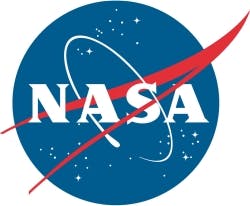NASA Langley Research Center opens Hydro Impact Basin facility
Posted by Courtney E. HowardHAMPTON, Va., 15 Aug. 2011. NASA Langley Research Center opened a new testing facility for the development and certification of future space exploration vehicles. The Hydro Impact Basin facility is located at the center's Gantry, where Neil Armstrong trained to walk on the moon and which is currently being used to validate the Orion Multi-Purpose Crew Vehicle (MPCV) for water landings.This is a "bridge to the future," says Lesa Roe, Langley's center director. "It's commemorating the next chapter in our (space exploration) legacy."Immediate plans for the new facility include: six weeks of adjustments to water basin testing procedures at the Gantry, six more tests of the Orion MPCV boilerplate test article, and a quiet period while the Orion ground-test article (GTA) is readied at Lockheed Martin in Denver and ferried to Langley.That could take as long as a year, said Mark Kirasich, deputy manager of the Orion MPCV Project Office at NASA's Johnson Space Center."It's a full-scale, pre-production version of our spacecraft," Kirasich says of the GTA. "It's the highest-fidelity crew module we have to date." It is undergoing testing in Denver. Before the Orion MPCV comes to Langley, its heat-shield quality is being enhanced to make it closer to that which eventually will go into space. "Even though we could bring the ground-test article here, it would not be particularly valuable testing until we get the heat shield," Kirasich adds.The boilerplate tests are being conducted with about 192 sensors, whereas the ground-test vehicle will carry roughly 600 sensors. Work with the ground test article will go a long way toward getting it ready for an unmanned flight test in late 2013 or 2014, Kirasich says. The MPCV will be human-ready in 2017. What happens after that will evolve in sync with NASA's development of a new space launch vehicle to take the capsule aloft, he adds."These investments in NASA Langley are investments in our future," says Rep. Bobby Scott (D-Va. 3rd). “If we don't make investments now, we'll pay for it in the future. Technology that is being developed here today will be the technology that we'll be using 30 years from now."
